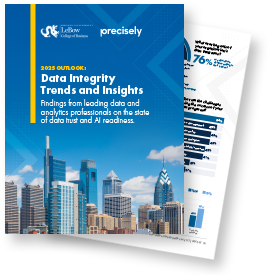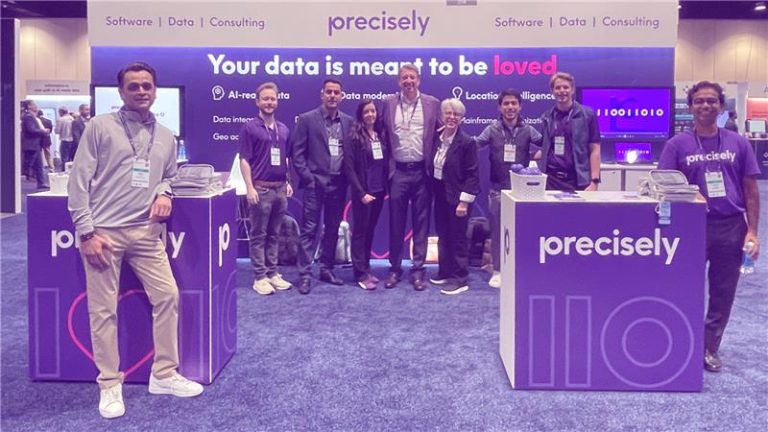
5 Key Cloud Computing Trends in 2024

Cloud computing is more crucial than ever in 2024. With technology landscapes transforming at a breakneck pace, your ability to leverage cloud computing could be the game changer needed to boost efficiency and spark innovation in your business.
Think back to how global disruptions have sped up our shift to digital in the past few years alone. The COVID-19 pandemic played a big part, along with volatile market conditions and an ever-changing regulatory environment. This shift hasn’t just expanded our reliance on cloud technology, it’s redefined how we view resilience and adaptability in business.
Let’s dive deeper into key cloud computing trends in 2024, what’s driving cloud adoption, and best practices for success in your own journey.

Driving Factors Behind Cloud Adoption
For most organizations, cloud technology adoption is largely driven by the need for agility and scalability.
With artificial intelligence (AI) gaining momentum, multi-cloud strategies reshaping the cloud computing landscape, and an always-evolving regulatory environment, the cloud has become a powerhouse that drives businesses like yours forward.
Cloud advancements promise to help you:
- optimize operational efficiency
- meet the increasingly complex demands of modern business environments
- enhance compliance
Benefits like these make it easy to see why more businesses than ever are jumping onto the cloud bandwagon – it helps you achieve agility and scalability with ease. Moving away from traditional setups enables you to scale resources seamlessly and get products to market faster – which is crucial in today’s fast-paced world.
So, are you ready to harness the cloud’s full potential? Next, you’ll discover five trends to know about to keep you informed and ready to
5 Key Trends in Cloud Computing for 2024
What’s trending in the cloud space this year? Let’s look at five factors that will likely impact your cloud journey, whether directly or indirectly.
- Cloud powered by both AI and machine learning (ML): These solutions are getting more attention than ever these days, and for good reason. Both vendors and consumers can find tremendous value through AI and ML with their ability to help you unlock benefits like time savings, reduced costs, and stronger insights for decision-making.
- Hybrid and multi-cloud adoption: The future is now, and it’s hybrid. When you adopt a mix of on-premises and cloud services, you optimize operations and enhance security. More and more organizations are also adopting cloud-based platforms from multiple vendors – and the vendors, in turn, are making strides to support those multi-cloud deployments as demand grows.
- Data fabric and data mesh: As a result of the hybrid and multi-cloud adoption trend, businesses will need to determine the best way to weave different data sources from varying systems together – which places data fabric and data mesh in the spotlight.
- Increased investment in cloud security and resilience: As cyber threats loom larger, protecting your data in the cloud has never been more critical. Investing in robust security measures ensures your business stays safe and compliant.
- No-code and low-code cloud services: User-friendly solutions are also growing in demand. The pandemic sparked the emergence of a skills gap that has remained a persistent and pressing problem for organizations of all sizes. To boost efficiency, cut costs, and stay agile, businesses seek solutions that are easy to use by technical and business users alike.
2025 Outlook: Essential Data Integrity Insights
What’s trending in trusted data and AI readiness for 2025? The results are in!

4 Stages of Cloud Adoption
Adopting cloud tech is a journey. There’s a lot to consider as you make your way through, but it can ultimately be broken down into four stages:
- Project: Start small, defining specific projects that tackle distinct needs. What are the required skills? What do you have available in-house, and where do you need external support?
Completing one project at a time will gradually help you learn, gain confidence, and ultimately build your cloud foundation.
- Foundation: Gradually increase your cloud presence, building a scalable and secure base for more extensive projects.
- Migration: Prepare for long-term cloud operations, and begin to look at look at migrating your critical datasets, like legacy systems, as you establish a cloud center of excellence.
- Optimization and Reinvention: Finally, make the cloud the heart of your operations – continuously enhancing systems and processes.
Best Practices for Cloud Migration and Optimization
The road to cloud adoption isn’t without its challenges, from security risks to migration headaches, but when you face them head-on you’ll be able to continuously innovate and optimize your operations.
Here are some best practices to keep in mind along the way:
- Start small: Tackle manageable projects that deliver quick wins. This builds confidence and sets the stage for larger initiatives.
- Build a robust foundation: Create a strong cloud base that supports your business’s growth and scales with your needs.
- Employ a cloud strategy that works for you: Customize your cloud solutions. There’s no one-size-fits-all here.
- Work with third parties: Combining external expertise with your in-house talent can accelerate your cloud projects.
- Future-proof your architecture: Design flexible systems that can evolve with emerging technologies and market demands.
Cloud-Powered Success Awaits
As you continue to explore the vast potential of cloud computing in 2024, remember that strategic adoption is a necessity for staying competitive and resilient.
According to Gartner, “85% of organizations will embrace a cloud-first principle by 2025”, and as customer expectations become more demanding, understanding the intricacies of cloud migration and modernization will be crucial.
But cloud migration and modernization projects don’t always go according to plan, and that’s why it’s essential to understand what’s trending now, so you can better navigate potential pitfalls.
Precisely the global leader in data integrity, in partnership with the Center for Applied AI and Business Analytics at Drexel University’s LeBow College of Business, surveyed 565 data and analytics professionals on their organizations’ data strategies, priorities, challenges and the state of data trust and AI readiness. The results are in, read the report today! 2025 Outlook: Essential Data Integrity Insights


